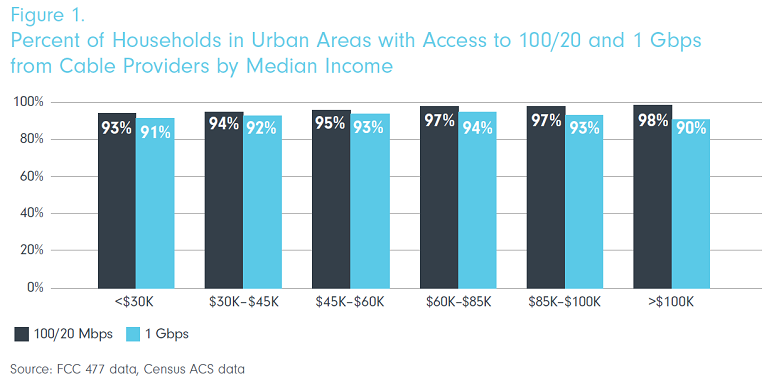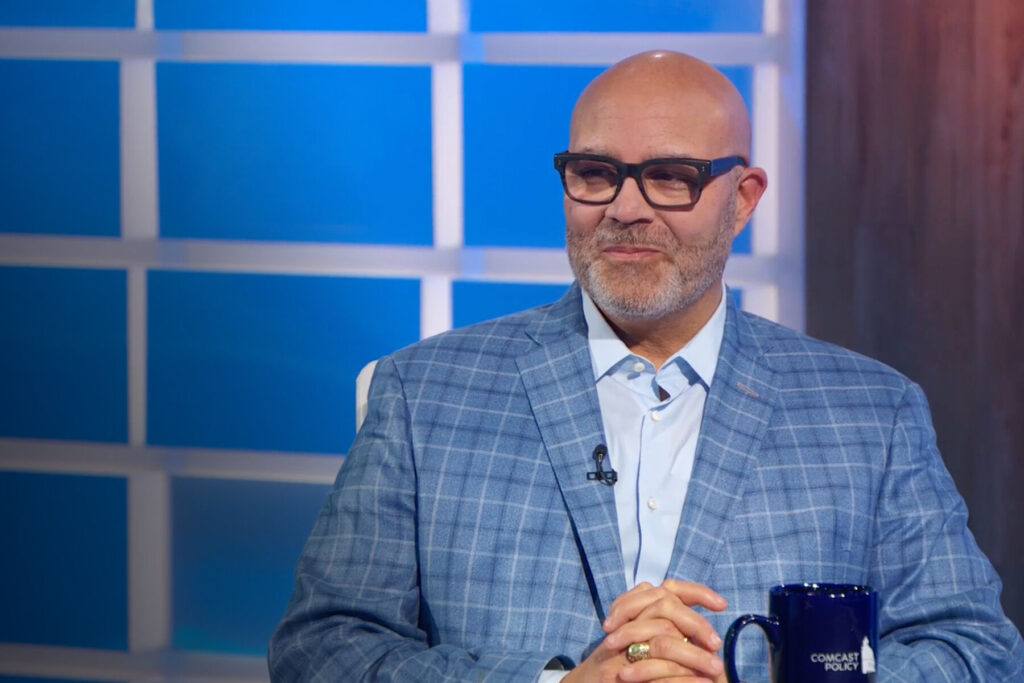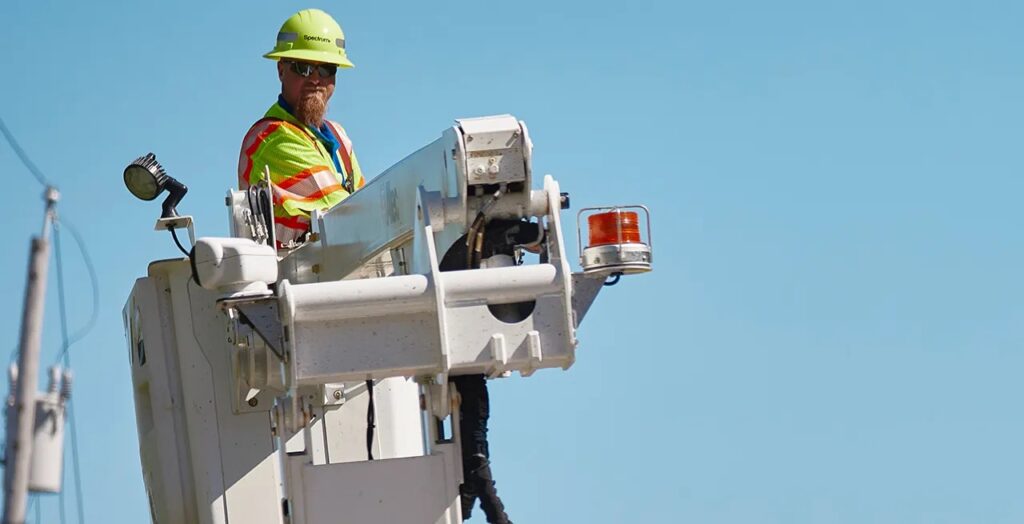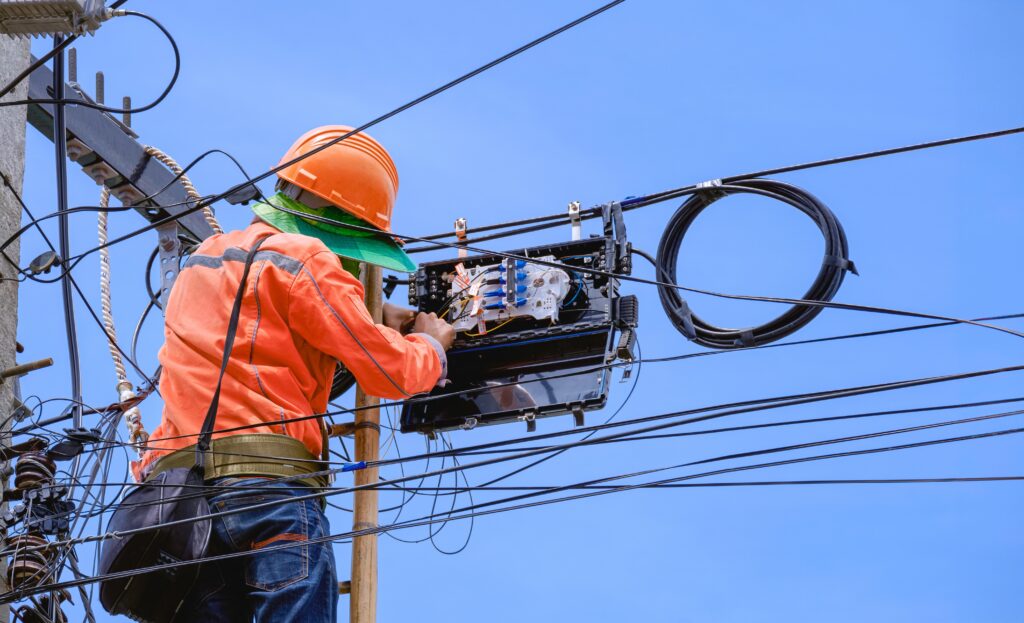As policymakers around the country continue to focus on getting all Americans connected to robust broadband service, it’s important to understand how broadband is deployed today and where broadband infrastructure gaps exist, especially in urban areas where few research studies have looked at this issue. That’s why NCTA examined data pulled from FCC and Census Bureau reports to determine where cable’s broadband networks have been deployed in urban centers, and to find out what capabilities are available across different household categories. The findings from this report, “Building a Gigabit Nation: An Analysis of Cable’s Superfast Networks in Urban Communities,” indicate that cable broadband providers have long been committed to and are continually expanding, deploying, and upgrading their networks in all communities, regardless of income or race.
Cable internet service providers (ISPs) have long built and updated their networks throughout their franchised network footprints. In fact, thanks to DOCSIS 3.1—a cable network technology that enables faster transmission speeds—gigabit speed services from cable providers were available throughout cable’s footprint to 82% of all U.S. households in June 2020, and the number keeps growing.
As the growth of these capabilities has continued in a broad fashion, its availability has also reflected strikingly little variation across income classes. According to the data, cable broadband providers offer gigabit service to 91% of urban households in low-income areas, as compared to 94% of all middle-income households and 90% for areas with the highest income households.
Further, virtually no difference was found in availability of gigabit services based on race or ethnicity. Specifically, cable providers offered gigabit service to 92% and 94% of households in areas with the highest percentage of African Americans and Hispanics, compared to 92% and 93% of households in areas with the lowest percent of African Americans and Hispanics.
Bottom line, as the industry continues to expand the capabilities and reach of its networks toward 10G solutions, cable providers are equally deploying their fastest services to communities regardless of income level or race.

These facts help to highlight how wide of the mark critics often are when they seek to assert that cable networks are built on a discriminatory basis targeting only households of a certain income or ethnic class. In addition, to building networks ubiquitously, cable operators are also working in parallel to overcome socio-economic barriers that impede broadband adoption. In fact, cable providers have connected over 14 million Americans in the past 10 years to the internet through their low-cost broadband adoption programs, which offer service for eligible families for as low as $9.95 a month. These programs also offer free devices or digital literacy training to further encourage adoption and make it as accessible as possible.
Cable operators also participated in the Emergency Broadband Benefit program during the COVID-19 pandemic to further expand their services as more people than ever before relied on broadband to get online and continue working, learning, and connecting with the world. To further adoption, the Senate recently passed the “Infrastructure Investment and Jobs Act” which includes $14.2 billion to continue this subsidy program, as well as nearly $3 billion for digital literacy and inclusion efforts. These bipartisan efforts are welcome and the cable industry stands ready to continue efforts to expand the benefits of broadband to all Americans.
For more information on the findings, read the full report here.









